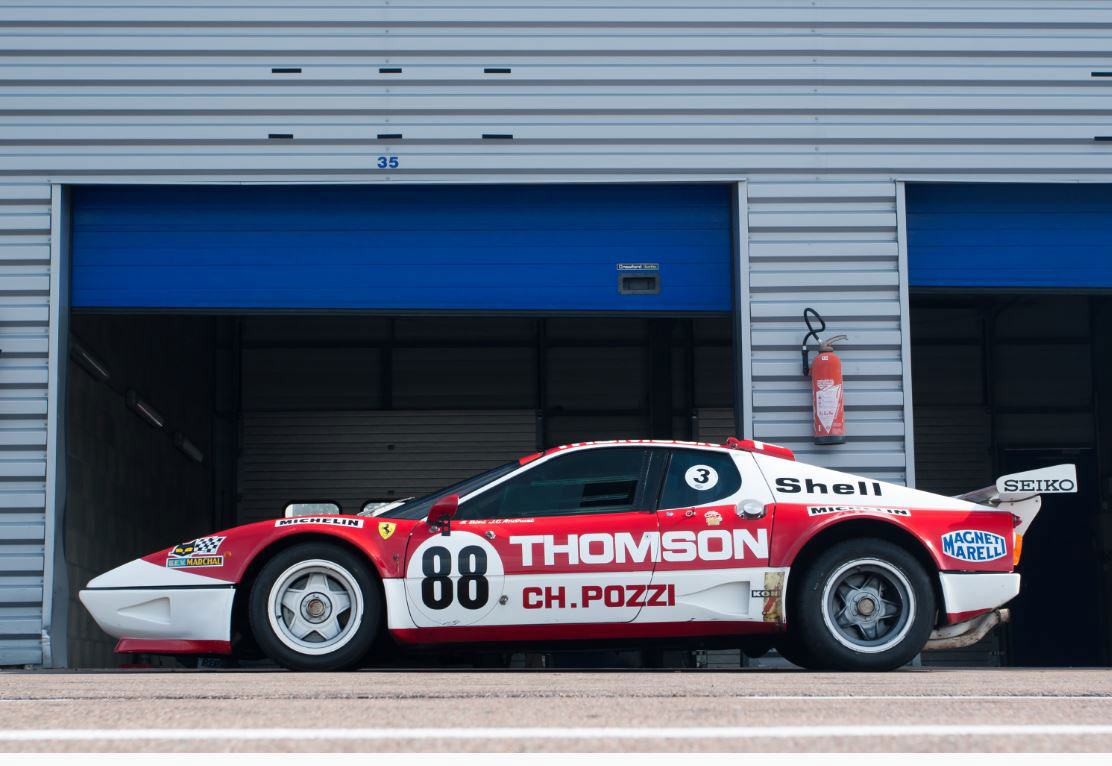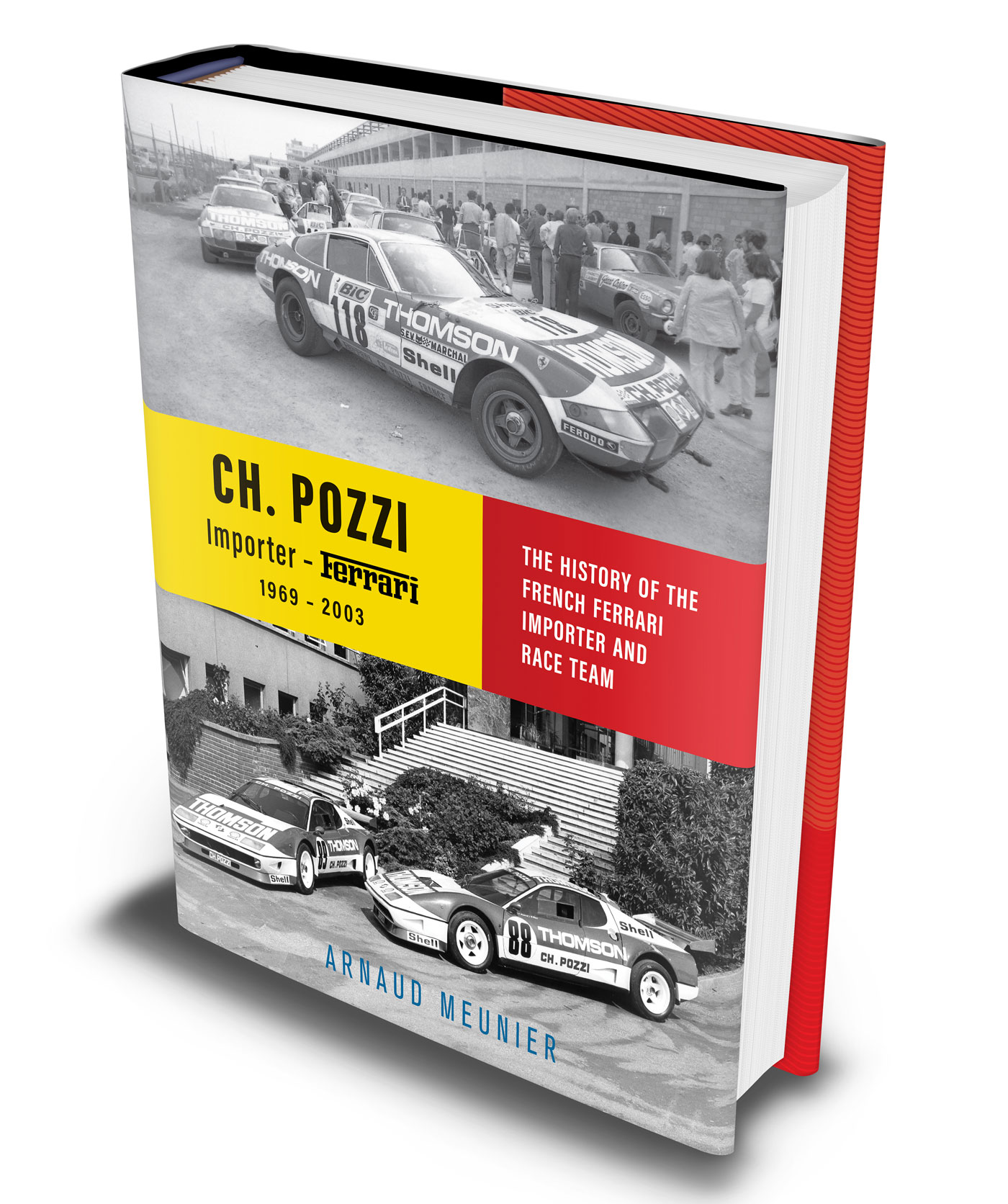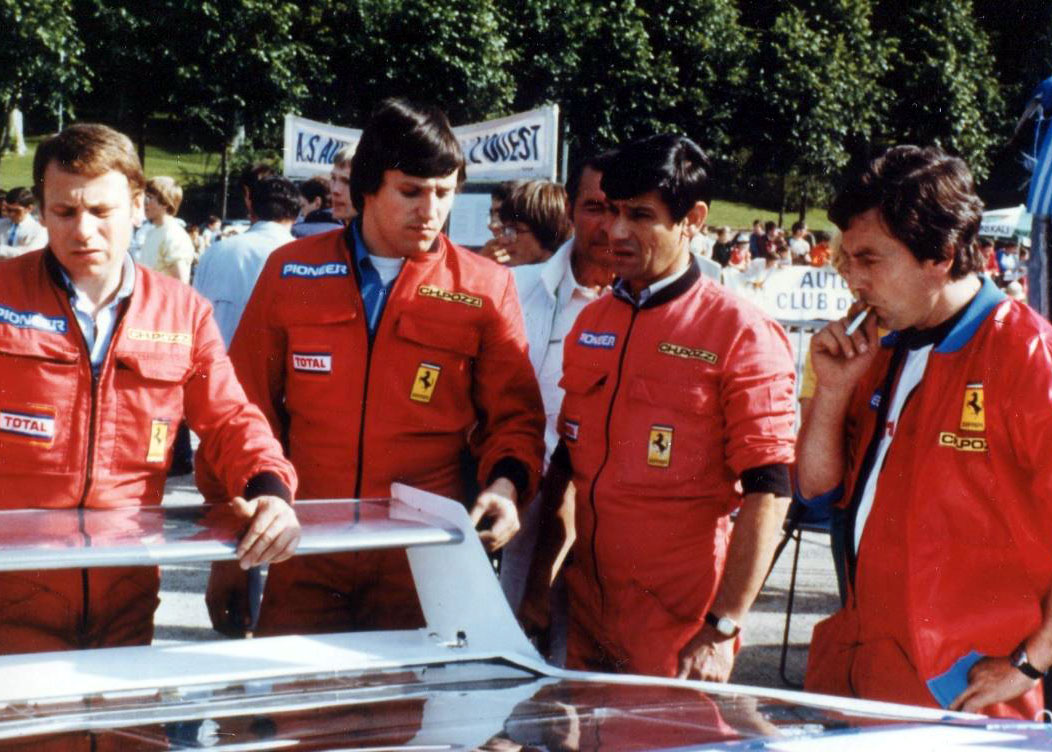Review by Pete Vack
Ch. Pozzi, Importer- Ferrari 1969-2003 THE HISTORY OF THE FRENCH FERRARI IMPORTER AND RACE TEAM
By Arnaud Meunier
291 pages, hardbound
Eau Rouge Publishing
ISBN 978-0-9573978-9-7
Translated from French by Marc Sonnery
After Luigi Chinetti departed France for the New World in 1951, a French race driver, importer and dealer by the name of Carlos Alberto “Charles” Pozzi (1909- 2001) took on selling Ferraris from an old building in Paris. The story of Pozzi and his dealership which became, from 1969 to 2003, the main importer and distributor for Ferraris in France, is told here for the first time.
It would have been nice if there was more about the early years of buying and selling Ferraris, but information about the pre-1969 years is scarce or not forthcoming. Fortunately, author Arnaud Meunier has now put down for posterity the years from 1969 to 2003, from the perspective of drivers, mechanics, salesmen, customers and members of the Ferrari club of France as well as the cars that constituted Team Ch. Pozzi Ferrari-France and the events in which they participated.
Meunier begins with a short chapter on the life of Charles Pozzi, and we find that he was much like us, interested in cars from an early age, a passion that continued for all of his 91 years. His grandfather was the Italian sculptor Egidio Pozzi (who lived in Milan). Charles was born in Montmartre, and apparently his family was well off; he got his first car, an Amilcar with a skiff body, while still in his teens. Soon he was buying and selling cars, and set up a dealership in Paris concentrating on upper class French cars such as the Delahaye, Talbot and Delage. After WWII, when such cars were scarce, Pozzi made many trips to the south of France, looking for what we’d call ‘barn finds’, cars hidden from the Germans in the countryside. Pozzi also established himself as a credible race driver with his trusty Delahaye, Talbot and Delage race cars. His dealership thrived, and when Luigi Chinetti left France for the U.S., Charles (Ch.) Pozzi began selling Ferraris, and established a long lasting relationship with Ferrari. By 1969 Pozzi had become not only a Ferrari dealer but the French distributor, under which came all the Ferrari dealers in France.
Second only to Pozzi himself was Daniel Marin, who began his career with as a salesman, and as the President Director General of Charles Pozzi S.A. devoted his career to improving and building the network of Ferrari dealers across France. By 1971, having a Ferrari racing team was seen as a way to increase publicity and therefore sales. Meunier notes that there are few importers who raced Ferraris with their own team; Scuderia Filipinetti in Switzerland, Ecurie Francorchamps in Belgium, Maranello Concessionaires in the U.K., and of course N.A.R.T. Both Pozzi and Marin were enthusiasts first, then race drivers, and put their all into selling Ferraris in France.
The Pozzi’s story consists of distributors, dealers, garages, mechanics, salesman, races, race cars, and race teams to describe and detail, all under the Pozzi banner. It might be difficult to get one’s hands around this, but the chapters eventually make sense of it all.
The interviews and mini biographies are scattered throughout the book, and include salesman, mechanics, drivers and managers from a wide range of Ferrari dealers in France who were part of the Pozzi network. Their recollections and anecdotes give the book a very personal note and informs us of what it was like to work for a Ferrari dealership fifty odd years ago. In addition, there are short segments on each of the dealers in France which were under the Pozzi umbrella from 1969 to 2003, a very interesting look at French Ferrari dealers, their locations and personnel.

1978 512 BB Competizione that was entered for the Le Mans 24 hour race that year, but could not match the speed of the Porsches.
The bulk of the book is devoted to Team Ch. Pozzi Ferrari-France and the cars raced by the team. Covered in detail, each with a chapter, are the 365 GTB/4 Competizione (1971-1974); the 512 BB Competizione, 1978; the 512 BB LM, 1979-1982; the 308 GTB Group 4, 1981-1983; the F40/LM, 1989-1990; and the Ferrari Challenge Western Europe, 1993-2003. This is followed by a register of all the Ferraris raced by the team.
Ch. Pozzi eventually suffered the fate of many successful auto distributors; the factory decides to buy out the dealerships after many years of hard work on the part of the distributor, building the network and increasing sales. In 2003, according to the author, “Ferrari SPA decided to set standards and exert more control over its distribution network. To that end the factory actually bought Charles Pozzi, S.A., including all of its departments.” It was the end of an era.
By 2020 all traces of Ch. Pozzi S.A. had disappeared.




Un excellent document sur l’équipe Pozzi .